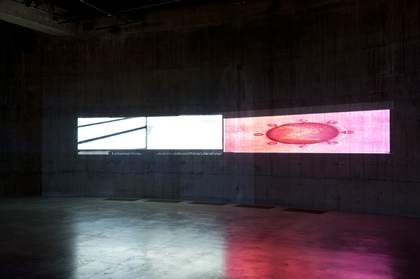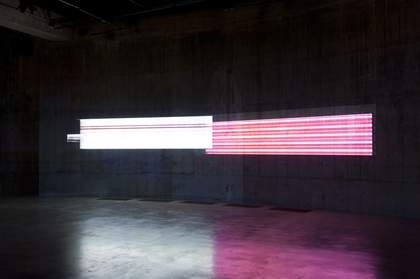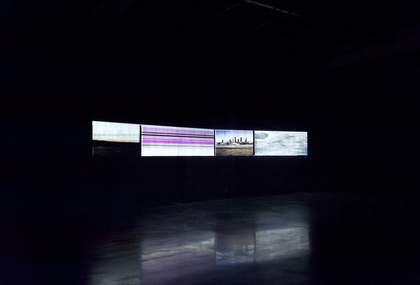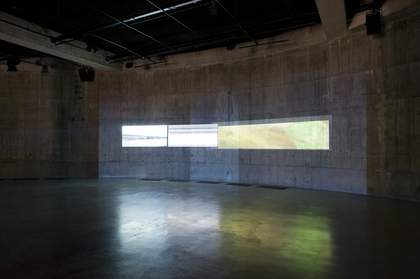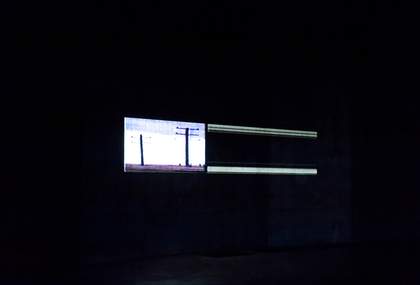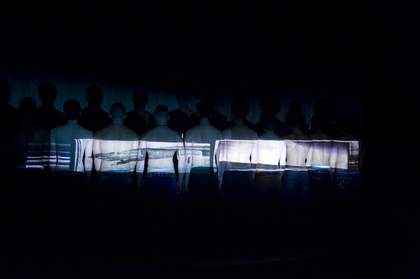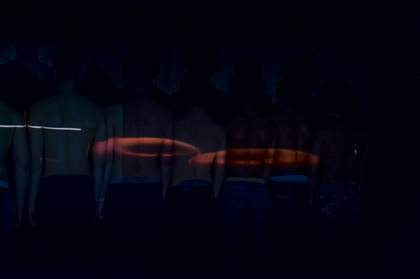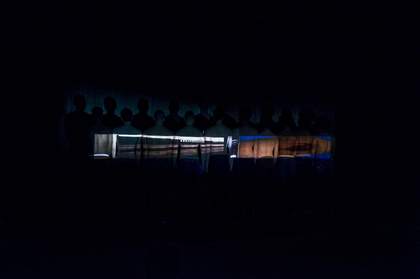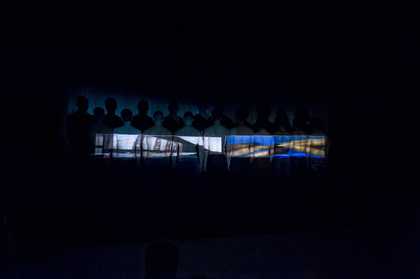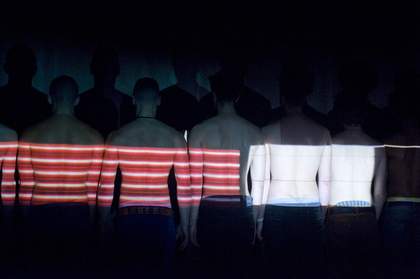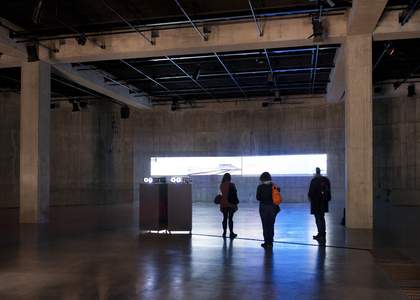To mark the 2012 opening of the Tanks, Tate Modern’s dedicated live art space, a number of artists working across film, installation, new media, performance, and other live art forms were invited to present works. The programme comprised a number of historical artworks, as well as new pieces developed specially for the space. In addition, a variety of participatory and educational events were presented, including the symposium Playing in the Shadows, which took place over the 26 and 27 October in the Starr Auditorium and was accompanied by an illustrative programme of four performances by Tina Keane, Patrick Staff, Kerry Tribe and Aura Satz in the Tanks. The symposium included talks and papers from a number of speakers, highlighting the work of scholars exploring expanded media and intersections between art, film and the live event. In particular, they focused on artists’ use of illumination and darkness, as a response to the unique space of the Tanks at Tate. The accompanying performances offered examples of artists working in this area, challenging the use of projection in radical ways, and experimenting with the nature of performance.
Tina Keane’s Transposition was a reworking of her 1992 piece of the same name, which had first been shown at the Museum of Modern Art in Vienna. Originally conceived as a projection of light shown across the backs of twenty-five men who were moving along a travellator (thereby fusing projection and performance), Keane translated the work into a double-screen video projection for the Tanks. To capture the same sense of motion in the video installation as had been seen in the performance, the projections – which had been letterboxed, transferring them from a wide-aspect ratio to standard one, in order to fit along the backs of the men – were moved by hand, resituating the human element of movement from in front of the camera to behind it. This was recorded, transferred to film and projected as the installation. This allowed Keane not only to retain an aspect of the hand-made, which digital editing and production would have largely erased, but also to create a work which could feasibly be shown within the space of the Tanks for the duration of the exhibition.1
Keane used images of landscapes, animals, the view from a train, and occasionally phrases and shots of people. The juxtaposition, re-shaping and quick movement of frames created something much more abstract, emphasising the interaction of light, movement and space more than the subject of the images displayed.
Keane also installed a version of the original presentation on a smaller scale, with ten men moving along a specially-installed travellator in the southern Tank, while the same light projections were played across their backs. In doing so, she exposed the potential for projection and film to be a transferable medium, moving from the live body to the screen and back again.
All four of the performances presented alongside Playing in the Shadows dealt differently with the nature of sound, light, projection and performance, pulling together key issues raised in the symposium. The works allowed the audience to consider the theoretical arguments in a different light, and to experience a range of contemporary creative work investigating light and darkness, image and action.
Acatia Finbow
March 2016

